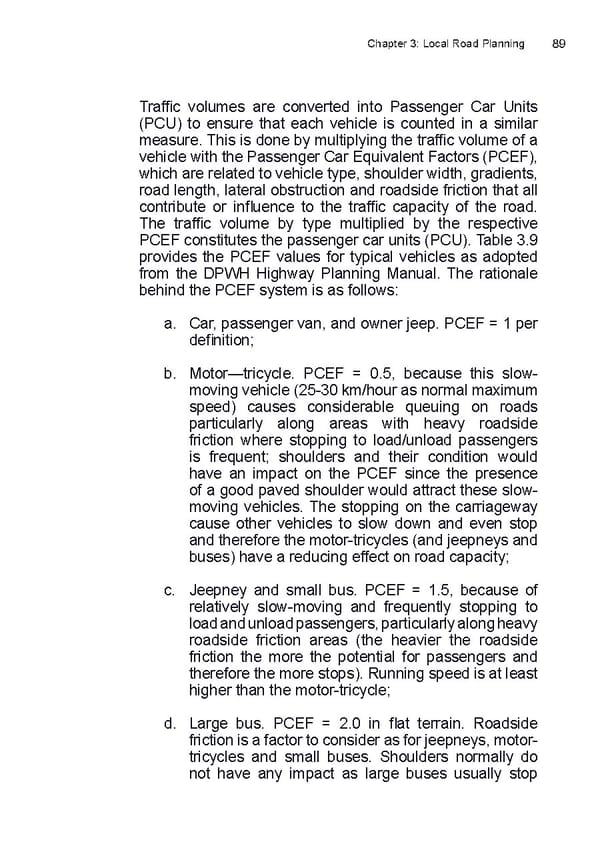Chapter 3: Local Road Planning 89 Traffic volumes are converted into Passenger Car Units (PCU) to ensure that each vehicle is counted in a similar measure. This is done by multiplying the traffic volume of a vehicle with the Passenger Car Equivalent Factors (PCEF), which are related to vehicle type, shoulder width, gradients, road length, lateral obstruction and roadside friction that all contribute or influence to the traffic capacity of the road. The traffic volume by type multiplied by the respective PCEF constitutes the passenger car units (PCU). Table 3.9 provides the PCEF values for typical vehicles as adopted from the DPWH Highway Planning Manual. The rationale behind the PCEF system is as follows: a. Car, passenger van, and owner jeep. PCEF = 1 per definition; b. Motor—tricycle. PCEF = 0.5, because this slow- moving vehicle (25-30 km/hour as normal maximum speed) causes considerable queuing on roads particularly along areas with heavy roadside friction where stopping to load/unload passengers is frequent; shoulders and their condition would have an impact on the PCEF since the presence of a good paved shoulder would attract these slow- moving vehicles. The stopping on the carriageway cause other vehicles to slow down and even stop and therefore the motor-tricycles (and jeepneys and buses) have a reducing effect on road capacity; c. Jeepney and small bus. PCEF = 1.5, because of relatively slow-moving and frequently stopping to load and unload passengers, particularly along heavy roadside friction areas (the heavier the roadside friction the more the potential for passengers and therefore the more stops). Running speed is at least higher than the motor-tricycle; d. Large bus. PCEF = 2.0 in flat terrain. Roadside friction is a factor to consider as for jeepneys, motor- tricycles and small buses. Shoulders normally do not have any impact as large buses usually stop
 Local Road Management Manual Page 89 Page 91
Local Road Management Manual Page 89 Page 91